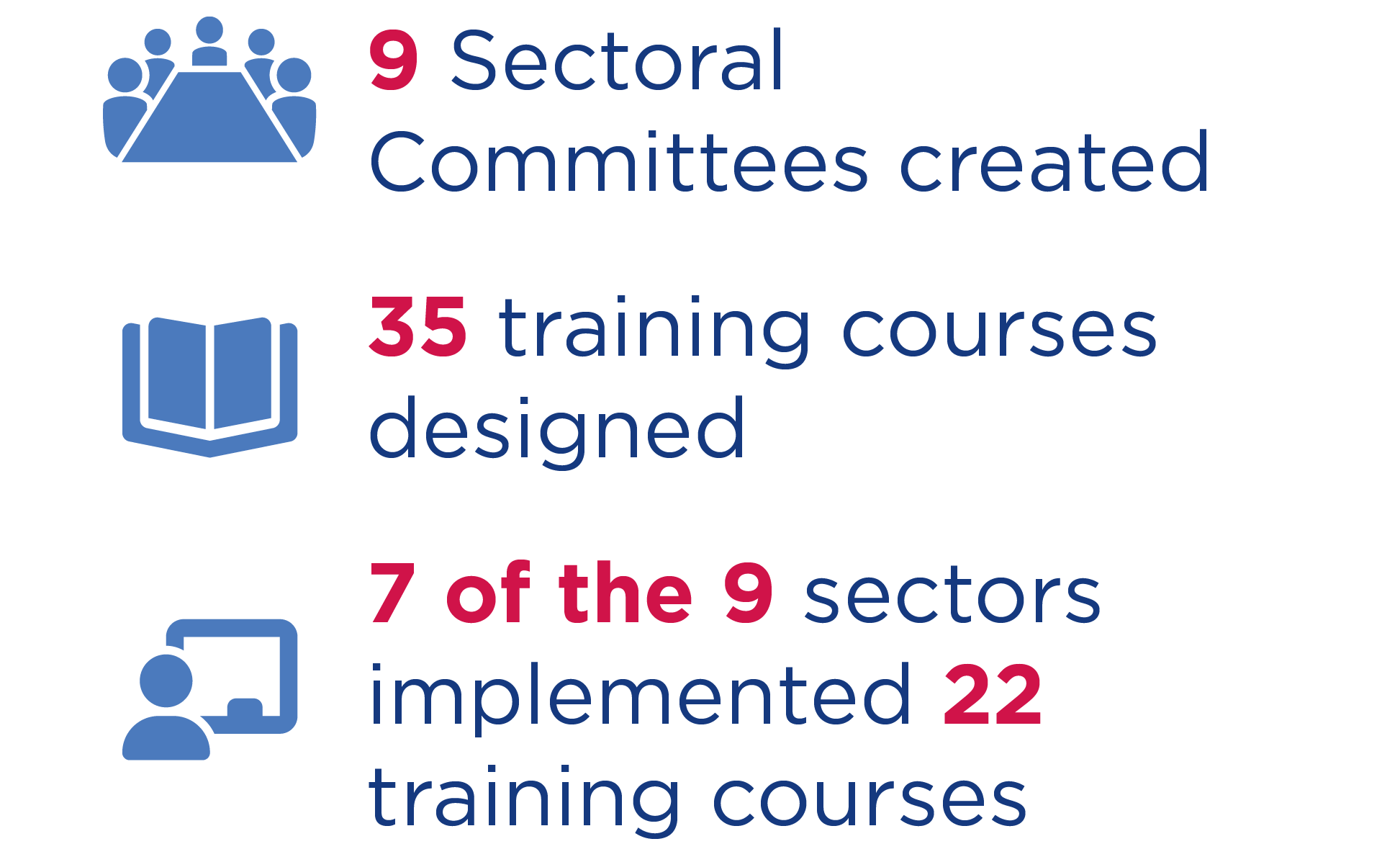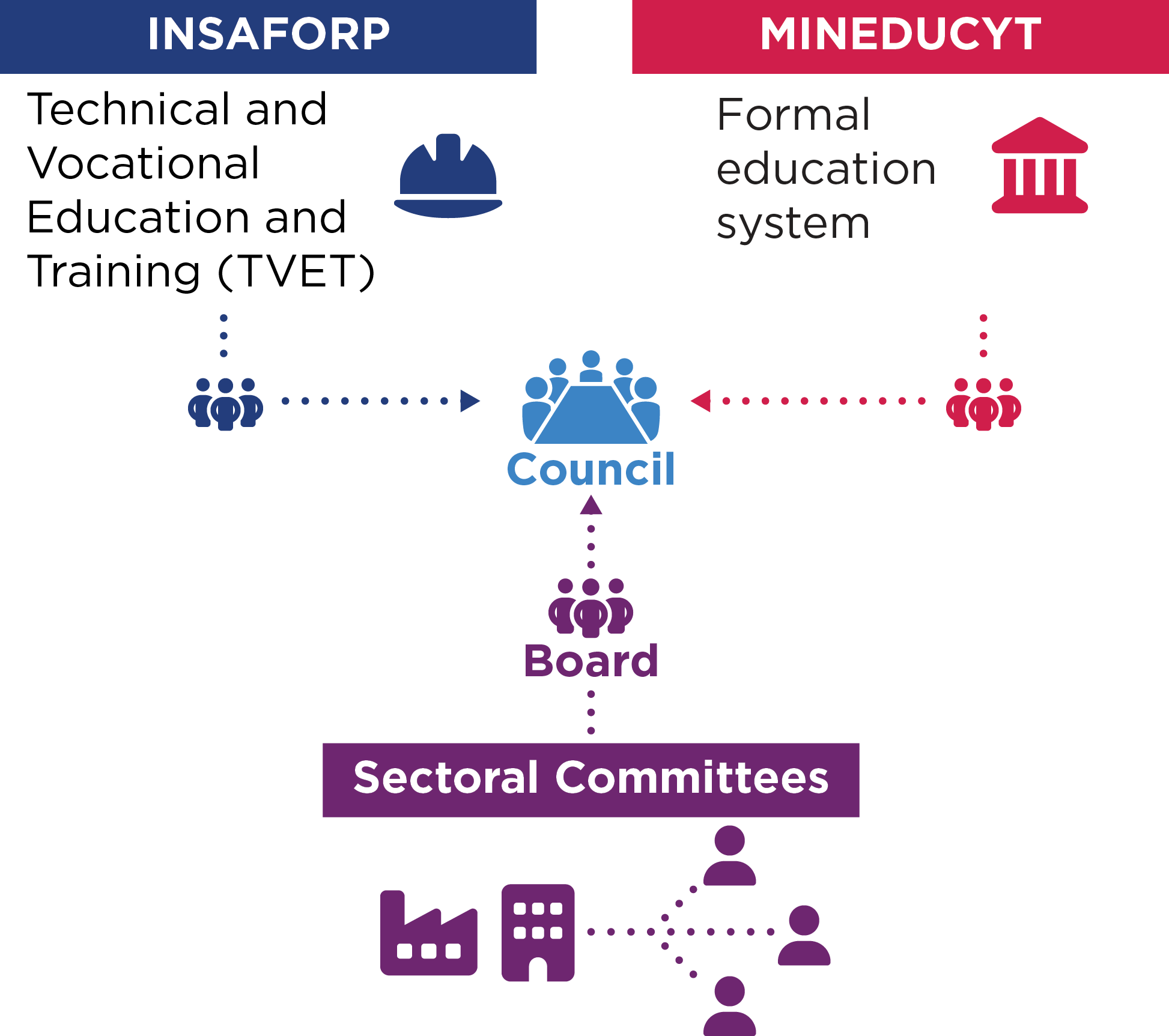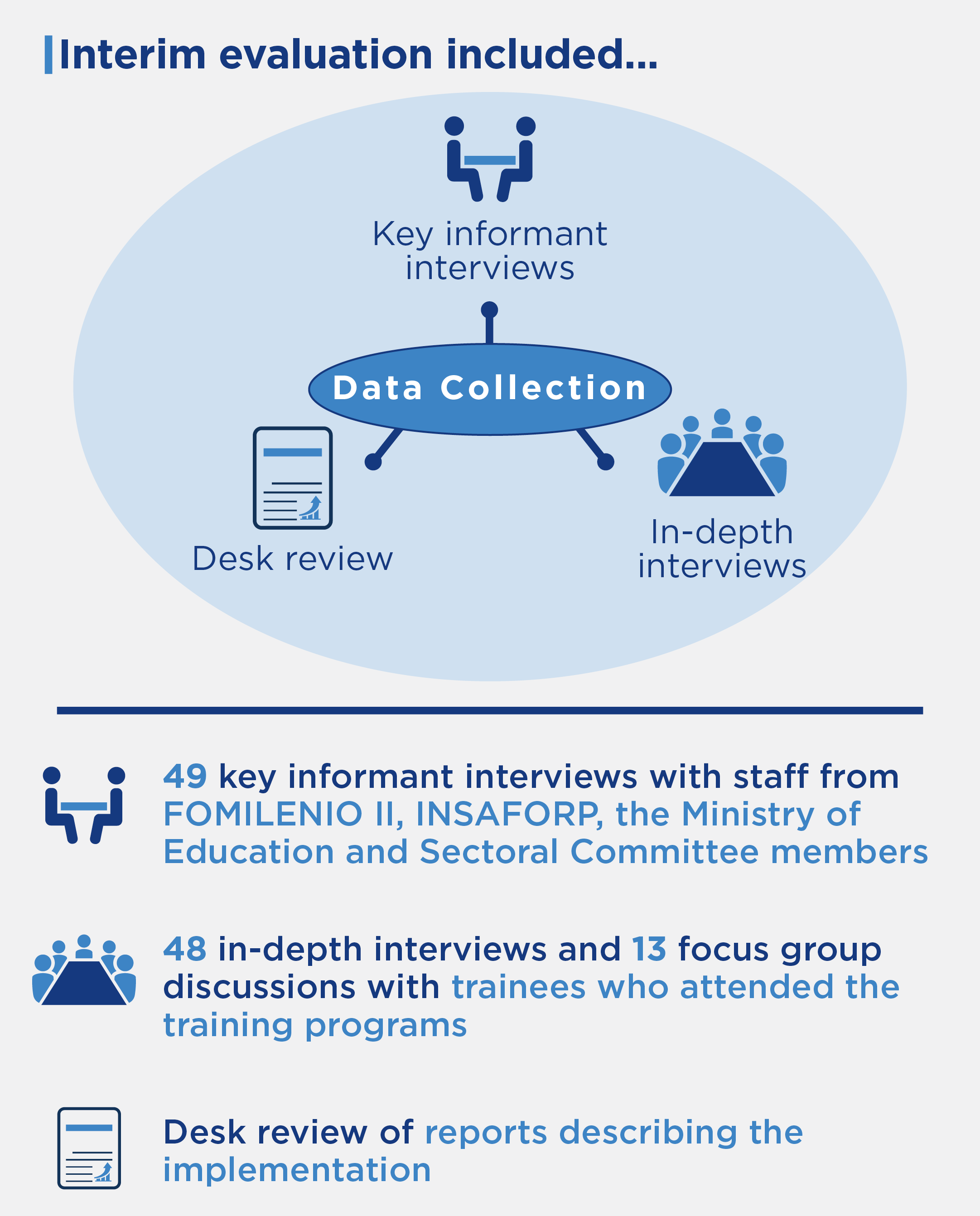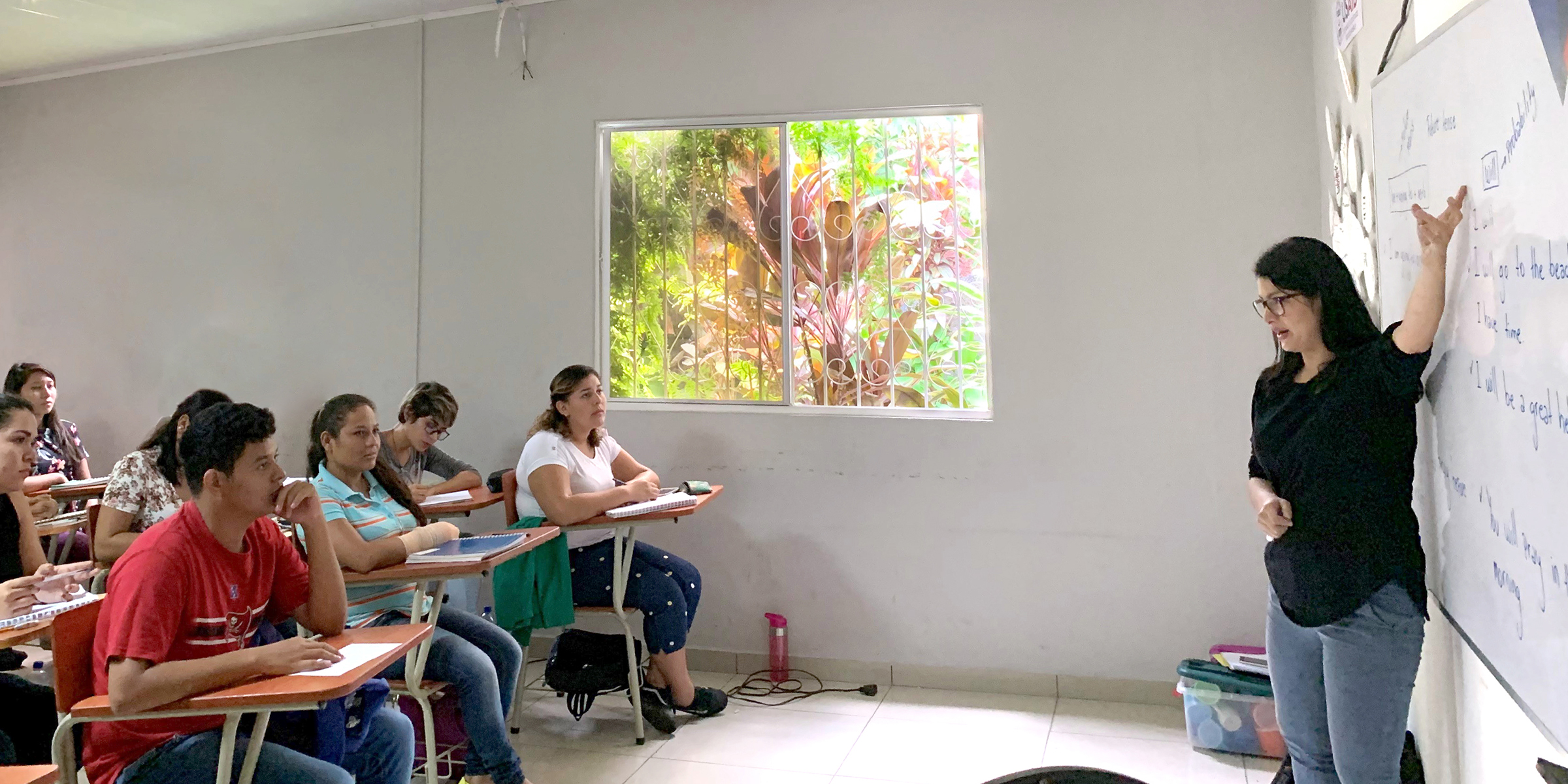Program Overview
MCC’s $271 million El Salvador Investment Compact (2014-2019) funded the $5.3 million Technical Vocational Education Training (TVET) System Reform Activity, which aimed to strengthen the national TVET governance system. More broadly, the activity invested in creating a TVET system that was better aligned with the skills employers demanded, with the objective of increasing the labor productivity of Salvadoran workers.
Key Findings
Alignment of TVET Training and Sector Needs
- The alignment of TVET training and sector needs has begun, but needs strengthening. The private sector capacity increased to offer relevant training, including creating nine Sectoral Committees, designing 35 courses, and implementing 22 courses
Trainees’ Job Skills
- Trainees reported that the skills they gained were relevant for their work and desirable in the labor market.
- Trainees did not yet perceive changes in wage and non-wage benefits.
Role of TVET System Entities
- Two new TVET system entities were created. First, a Sectoral Committee Board (SCB) to compile training needs across all sectors, which eight of the nine prioritized sectors embraced.
- Second, a Coordination Council for Technical Education and Professional Training (CCTEPT) to coordinate training, comprised of two board members and representatives from public institutions responsible for TVET.
- These entities partially fulfilled their intended roles.
- The collaboration between the public and private sectors is in the early stages.
Evaluation Questions
This final performance evaluation was designed to answer questions focused on implementation, capacity-building results, and sustainability. Below is a subset of the evaluation questions:
- 1
How was the intervention implemented? - 2
How were the capacities of the private sector strengthened to identify training needs? - 3
How were the capacities of the government institutions strengthened to respond to the demands for technical education and professional training in the private sector? - 4
What were the perceived changes for trainees who participated in training courses? - 5
What are the plans for the institutional and financial sustainability of the services offered and the TVET entities created as part of the intervention?
Detailed Findings
Alignment of TVET Training and Sector Needs

This activity established nine Sectoral Committees: plastics; sugar; tourism; poultry; textiles; construction; coffee; information and communications technology; and micro, small and medium enterprises. Most of the sectors already had industry associations, but the activity helped them legally establish and focus on their workforces’ training needs. Some Sectoral Committees plan to establish, or have already established, a training center. Even though some of these sectors were already providing training, this activity focused the sectors on delivering competency-based training courses that would be better aligned with prioritized job positions.
As part of the intervention, training needs were identified and training courses were designed and implemented. Thirty-five training programs were designed for the nine sectors. Seven of the nine sectors implemented 22 training courses. All sectors experienced delays implementing their courses due to contracting-process issues and the COVID-19 pandemic. In addition, most training courses required substantial modifications from their original design.
Trainees’ Job Skills
Trainees reported gaining skills relevant for their jobs or the job market in the following sectors: sugar; poultry; information and communications technology; and micro, small and medium enterprises. Female and male trainees had similar perceptions regarding the quality of the training received. Employed trainees noted they had gained skills that improved their job performance. Similarly, trainees who were still enrolled in a degree-granting program perceived that the skills gained in the courses were in demand in the job market.
Trainees did not perceive changes in their work conditions, income, non-wage compensation, or benefits after completing the training. Trainees reported acquiring relevant knowledge and skills, but these gains were not yet translated into salary increases, benefits or job opportunities. Trainees noted that they gained greater responsibilities in their jobs. Trainees expected that the increase in responsibilities would eventually lead to a salary increase.
Role of TVET System Entities

The SCB was established with eight of the nine prioritized sectors, but the board has suspended activities since the pandemic. Two board members were selected for the CCTEPT. FOMILENIO II, the implementing entity, led the board but was not able to transfer the leadership before the pandemic. The board has not held meetings since the start of the pandemic. Moreover, some members of the board are no longer able to participate. The ongoing role of the board is uncertain given the lack of leadership.

The council was established but has faced leadership challenges. The council did convene its board representatives and staff from the Ministry of Education and from the Salvadoran Institute for Professional Development, known by its Spanish acronym of INSAFORP. The council has not advanced since those initial meetings. There was uncertainty among Sectoral Committee members about the process to discuss their training needs with INSAFORP and the Ministry of Education going forward.
The process to align training offerings with the needs of the private sector started but needs to be strengthened. The board was intended to help consolidate the skills demanded by the private sector. The role of the council was to harmonize the skills demanded with the technical training offered. The creation of the Sectoral Committees improved the capacity of the private sector to identify, and in some cases provide training. However, the board has not yet fulfilled the goal of compiling the skill needs across sectors and has not yet led the creation of the new Sectoral Committees. The council was expected to co-lead the plans for technical education and professional training, but this work has not taken place yet. While individual sectors have obtained support from INSAFORP to provide relevant training, the TVET system is not yet functioning as envisioned.
MCC Learning
For TVET programs that require coordination from the public sector, these institutions need to give their staff the time to engage. This approach might require revising position descriptions for government employees to include coordination tasks.
Recurring market analysis, done by the partner government, should be a requirement for TVET projects and should inform which sectors participate in TVET projects.
Tracking TVET trainees should also be a requirement for TVET projects to understand which courses are placing trainees in jobs.
Projects should use existing knowledge from the private sector to shorten implementation periods and help ensure that courses use up-to-date knowledge and technology.
To address gender equity more fully, barriers to employment, at the sector level, should be assessed before training courses are developed.
Training courses need to consider trainees’ work schedule.
Evaluation Methods

This mixed-methods performance evaluation drew on three rounds of qualitative data collected in February 2020, September 2020, and between November 2021 and April 2022. The evaluation also drew on enrollment data (by gender) from the training courses offered in the following sectors: plastic; sugar; poultry; information and communications technology; and micro, small and medium enterprises. Qualitative data included key informant interviews with staff from FOMILENIO II, INSAFORP, the Ministry of Education, and members of the Sectoral Committees. Data also came from discussions with trainees who attended the training programs and a desk review of reports describing the implementation. The project’s exposure period ranged from 2018 to 2021.
2023-002-2853


